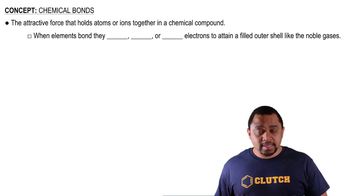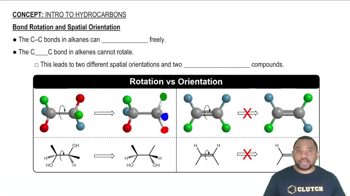Here are the essential concepts you must grasp in order to answer the question correctly.
Types of Chemical Bonds
Chemical bonds can be classified into single, double, and triple bonds based on the number of shared electron pairs between atoms. A single bond, like that in ethane, involves one pair of shared electrons, while a double bond, as seen in ethene, consists of two pairs. The nature of these bonds affects molecular geometry and rotation.
Recommended video:
Bond Rotation and Rigidity
Bond rotation refers to the ability of atoms connected by a bond to rotate around that bond axis. Single bonds allow for free rotation due to less steric hindrance, while double bonds restrict rotation because of the presence of pi bonds, which create a planar structure. This rigidity impacts the overall shape and reactivity of molecules.
Recommended video:
Bond Rotation and Spatial Orientation
Steric Hindrance
Steric hindrance is the repulsion between atoms that occurs when they are brought close together, affecting their ability to rotate around bonds. In the case of double bonds, the spatial arrangement of atoms creates more steric hindrance compared to single bonds, making it more difficult to twist or rotate around a double bond without breaking it.

 Verified step by step guidance
Verified step by step guidance

